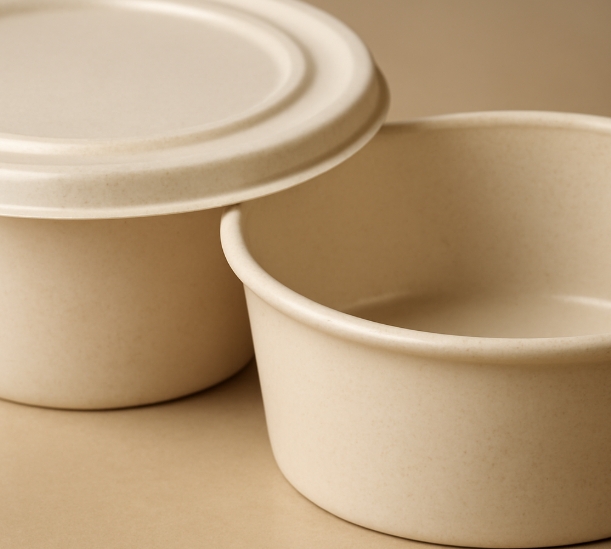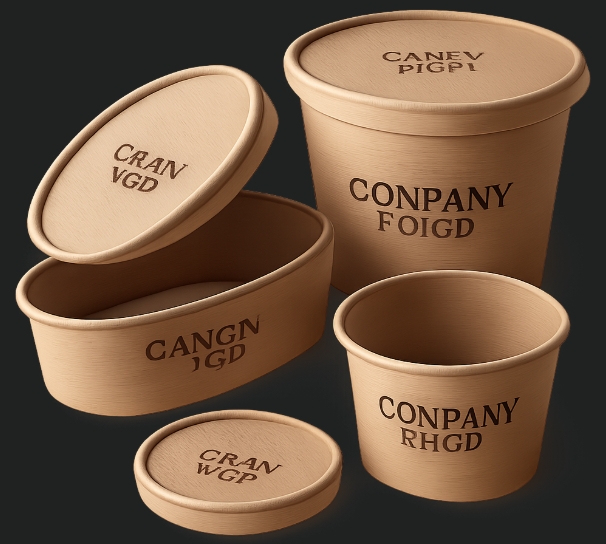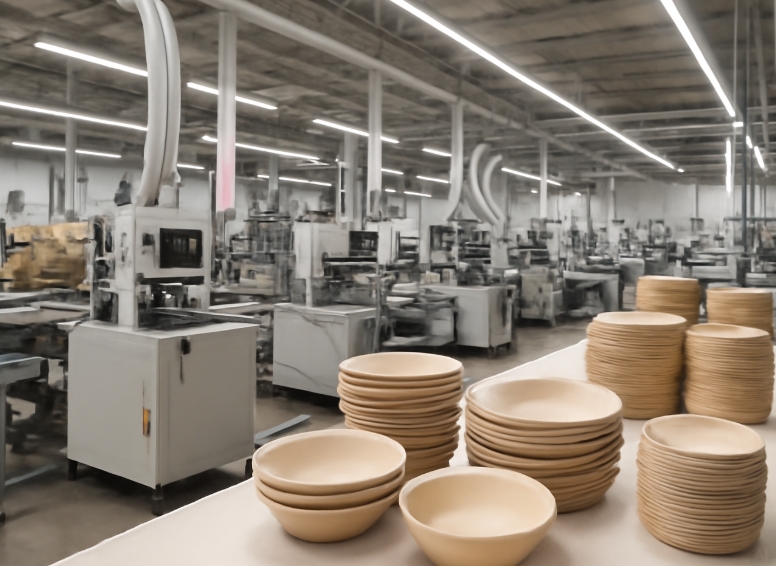
Content Menu
● Overview of the European Bowl and Lid Industry
● Key Trends Among Bowl and Lid Manufacturers and Suppliers
● Top Bowl and Lid Manufacturers and Suppliers in Europe
>> 1. Verallia (France)
>> 2. Ardagh Group (Ireland/Luxembourg)
>> 3. Vetropack (Switzerland)
>> 4. Papstar GmbH (Germany)
>> 5. Bioleader (Europe-wide)
>> 6. Natural Tableware (Netherlands)
>> 7. Biotrem (Poland)
>> 8. RECUP / REBOWL (Germany)
>> 9. Fletcher European Containers (UK)
>> 10. Itterra (Europe-wide)
● OEM Services and Customization
● Sustainability and Certifications
● Product Innovations: Materials and Design
>> Material Innovations
>> Design Innovations
● Conclusion
● Frequently Asked Questions (FAQs)
>> 1. What materials do European bowl and lid manufacturers and suppliers use?
>> 2. Can I order custom-branded bowls and lids for my business?
>> 3. Are European bowls and lids suitable for both hot and cold foods?
>> 4. What certifications should I look for when choosing a supplier?
>> 5. How do European manufacturers address sustainability?
In today's fast-paced food service and packaging industry, the need for reliable, innovative, and sustainable solutions is more critical than ever. Europe has established itself as a leader in this space, with its bowl and lid manufacturers and suppliers providing a wide array of products to meet the demands of international brands, wholesalers, and producers. This article presents a comprehensive overview of the European bowl and lid industry, highlighting the leading manufacturers and suppliers, key trends, OEM services, sustainability efforts, and product innovations. Whether you are a business seeking OEM partnerships or a wholesaler looking for high-quality, eco-friendly tableware, this guide will help you navigate the top players and essential considerations in the European market.

Overview of the European Bowl and Lid Industry
Europe's bowl and lid industry is characterized by advanced manufacturing technology, strict adherence to food safety regulations, and a strong commitment to environmental responsibility. Manufacturers and suppliers across the continent produce a diverse range of products, from disposable paper bowls and lids to durable glass and reusable plastic containers. The industry serves a wide spectrum of clients, including food service chains, catering companies, retailers, and OEM partners.
The European market is distinguished by its focus on quality, safety, and sustainability. Companies invest heavily in research and development to create products that meet the evolving needs of consumers and businesses alike. With increasing demand for eco-friendly and customizable solutions, European bowl and lid manufacturers and suppliers continue to set global standards for innovation and excellence.
Key Trends Among Bowl and Lid Manufacturers and Suppliers
The European bowl and lid sector is dynamic and constantly evolving. Several key trends are shaping the industry:
- Sustainability: There is a marked shift toward biodegradable, compostable, and recyclable materials. Manufacturers are adopting sustainable practices and materials to reduce environmental impact.
- Customization: OEM and private label services are increasingly popular, allowing brands to differentiate their products through unique designs, materials, and packaging.
- Certifications: Compliance with stringent EU food safety and environmental standards is essential, with many companies holding certifications such as ISO9001, BRC, and FDA.
- Innovation: Manufacturers are introducing new materials like bamboo, PLA (polylactic acid), and wheat bran, as well as developing advanced product designs for better functionality and aesthetics.
- Versatility: Products are designed to be suitable for both hot and cold foods, making them ideal for takeout, catering, and retail applications.
Top Bowl and Lid Manufacturers and Suppliers in Europe
Europe is home to numerous reputable bowl and lid manufacturers and suppliers, each with unique strengths and product offerings. Below are some of the leading companies in the industry:
1. Verallia (France)
- Products: Glass bowls, jars, and lids for the food and beverage industries.
- Strengths: Renowned for high-quality glass products, innovative designs, and a strong focus on sustainability.
- Certifications: ISO 9001, BRC, and compliance with EU food safety standards.
2. Ardagh Group (Ireland/Luxembourg)
- Products: Glass and metal packaging, including bowls and lids.
- Strengths: Operates over 57 production facilities across 12 countries, offers custom solutions, and advanced decoration capabilities.
- Certifications: ISO, BRC, and other international standards.
3. Vetropack (Switzerland)
- Products: Glass containers, bowls, and lids for food and beverage applications.
- Strengths: Custom designs, high durability, and a strong commitment to recycling and sustainability.
4. Papstar GmbH (Germany)
- Products: Disposable tableware, including paper and plastic bowls with lids.
- Strengths: Extensive product range, eco-friendly materials, and a robust distribution network.
5. Bioleader (Europe-wide)
- Products: Kraft paper salad bowls with lids, compostable and biodegradable options.
- Strengths: Custom printing, multiple sizes, and compliance with EU and FDA standards.
6. Natural Tableware (Netherlands)
- Products: Biodegradable bowls and lids made from renewable resources.
- Strengths: Innovative use of materials like wheat bran and bamboo, with a strong environmental focus.
7. Biotrem (Poland)
- Products: Bowls and lids made from wheat bran, fully biodegradable.
- Strengths: Unique materials, rapid decomposition, and growing media recognition.
8. RECUP / REBOWL (Germany)
- Products: Reusable bowls and lids for foodservice.
- Strengths: Deposit-return system, dishwasher safe, and designed for repeated use.
9. Fletcher European Containers (UK)
- Products: Plastic mixing bowls, food-grade containers, and lids.
- Strengths: Wide range of sizes, compliance with food safety standards, and custom solutions.
10. Itterra (Europe-wide)
- Products: Disposable paper cups, bowls, and lids.
- Strengths: Certified raw materials, advanced printing technology, and OEM/ODM services.
These companies exemplify the diversity and innovation found among European bowl and lid manufacturers and suppliers. Whether you require glass, paper, plastic, or biodegradable options, Europe offers a wealth of choices to suit every need.

OEM Services and Customization
A significant advantage of working with European bowl and lid manufacturers and suppliers is the availability of comprehensive OEM (Original Equipment Manufacturer) and private label services. These services allow international brands, wholesalers, and producers to create custom products tailored to their specific requirements. Customization options typically include:
- Material Selection: Choose from paper, plastic, glass, bamboo, or biodegradable composites depending on application and sustainability goals.
- Size and Shape: Options range from small side bowls to large meal containers, with custom shapes available.
- Printing: Advanced flexo and offset printing, supporting up to 7 colors for distinctive branding.
- Lid Options: Various materials such as paper, PP (polypropylene), PET (polyethylene terephthalate), PLA, and more, with options for air vents or tamper-evident seals.
- Packaging: Custom packaging solutions to meet retail or foodservice needs, including branded cartons and sleeves.
For example, many Chinese manufacturers serving the European market, such as KaiLai Packaging, offer a full range of paper salad bowls and lids with options for PE lamination, PLA lining, and custom printing, all designed to meet European standards.
Sustainability and Certifications
Sustainability is a central focus for European bowl and lid manufacturers and suppliers. The industry is rapidly adopting practices and materials that minimize environmental impact and support the circular economy. Key aspects include:
- Biodegradable and Compostable Materials: Increasing use of PLA, bamboo, wheat bran, and other renewable resources.
- Recyclable Products: Glass, certain plastics, and paper products are designed for easy recycling within established systems.
- Certifications: Leading manufacturers hold certifications such as ISO9001, BRC, SGS, TÜV, and FDA, providing assurance of product quality, safety, and regulatory compliance.
- Eco-Friendly Production: Investment in energy-efficient processes, waste reduction, and responsible sourcing of raw materials.
Manufacturers like Bioleader and Papstar GmbH provide full documentation and test reports to demonstrate compliance with environmental and food safety standards, ensuring reliability for international buyers.
Product Innovations: Materials and Design
European bowl and lid manufacturers and suppliers are at the forefront of product innovation, continually developing new materials and designs to enhance functionality, sustainability, and user experience.
Material Innovations
- Glass: Offers durability, recyclability, and suitability for both hot and cold foods. Glass bowls and lids are popular in retail and premium foodservice applications.
- Paper/Kraft: Biodegradable and compostable, paper bowls and lids are ideal for salads, soups, and takeout meals. Kraft paper options offer natural aesthetics and customizable branding.
- Plastic (PP, PET, PLA): Lightweight and leak-proof, these materials are available in recyclable or compostable versions. PLA, derived from renewable resources, is increasingly used for eco-friendly solutions.
- Wheat Bran/Bamboo: 100% natural and biodegradable, these materials provide innovative alternatives for single-use tableware.
Design Innovations
- Stackable Bowls and Lids: Designed for efficient storage and transport, reducing logistics costs and improving convenience for foodservice operators.
- Leak-Proof and Oil-Resistant Coatings: Ensure safe delivery and takeaway, preventing spills and maintaining food quality.
- Custom Shapes and Sizes: Manufacturers offer a variety of shapes and dimensions to meet diverse market needs, from round and square bowls to compartmentalized designs.
- Tamper-Evident Features: Enhance food safety and consumer confidence, particularly for delivery and takeaway applications.
By embracing these innovations, European bowl and lid manufacturers and suppliers are able to offer products that meet the highest standards of quality, sustainability, and performance.
Conclusion
Europe's bowl and lid manufacturers and suppliers are recognized globally for their commitment to quality, innovation, and sustainability. With a wide selection of materials, customizable options, and adherence to strict regulatory standards, these companies are well-positioned to serve the needs of international brands, wholesalers, and OEM partners. Whether you are seeking eco-friendly disposable tableware or durable reusable containers, the European market offers a wealth of reliable and forward-thinking solutions. As the industry continues to evolve, expect further advancements in materials, design, and sustainability, ensuring that European bowl and lid manufacturers and suppliers remain at the forefront of the global packaging sector.

Frequently Asked Questions (FAQs)
1. What materials do European bowl and lid manufacturers and suppliers use?
European bowl and lid manufacturers and suppliers utilize a wide range of materials, including glass, paper, kraft, plastic (PP, PET, PLA), bamboo, and wheat bran. The selection depends on the intended application, sustainability objectives, and client preferences.
2. Can I order custom-branded bowls and lids for my business?
Yes, most European bowl and lid manufacturers and suppliers offer OEM and private label services. You can customize materials, sizes, shapes, printing, and packaging to align with your brand identity and market requirements.
3. Are European bowls and lids suitable for both hot and cold foods?
Absolutely. European manufacturers design bowls and lids to withstand various temperatures. Products undergo rigorous testing for heat resistance, leak-proof performance, and compliance with food safety standards.
4. What certifications should I look for when choosing a supplier?
Look for certifications such as ISO9001, BRC, SGS, TÜV, FDA, and compliance with EU food safety standards. These certifications ensure product quality, safety, and regulatory compliance.
5. How do European manufacturers address sustainability?
European bowl and lid manufacturers and suppliers prioritize sustainability by using biodegradable, compostable, and recyclable materials, investing in eco-friendly production processes, and obtaining relevant environmental certifications.

















